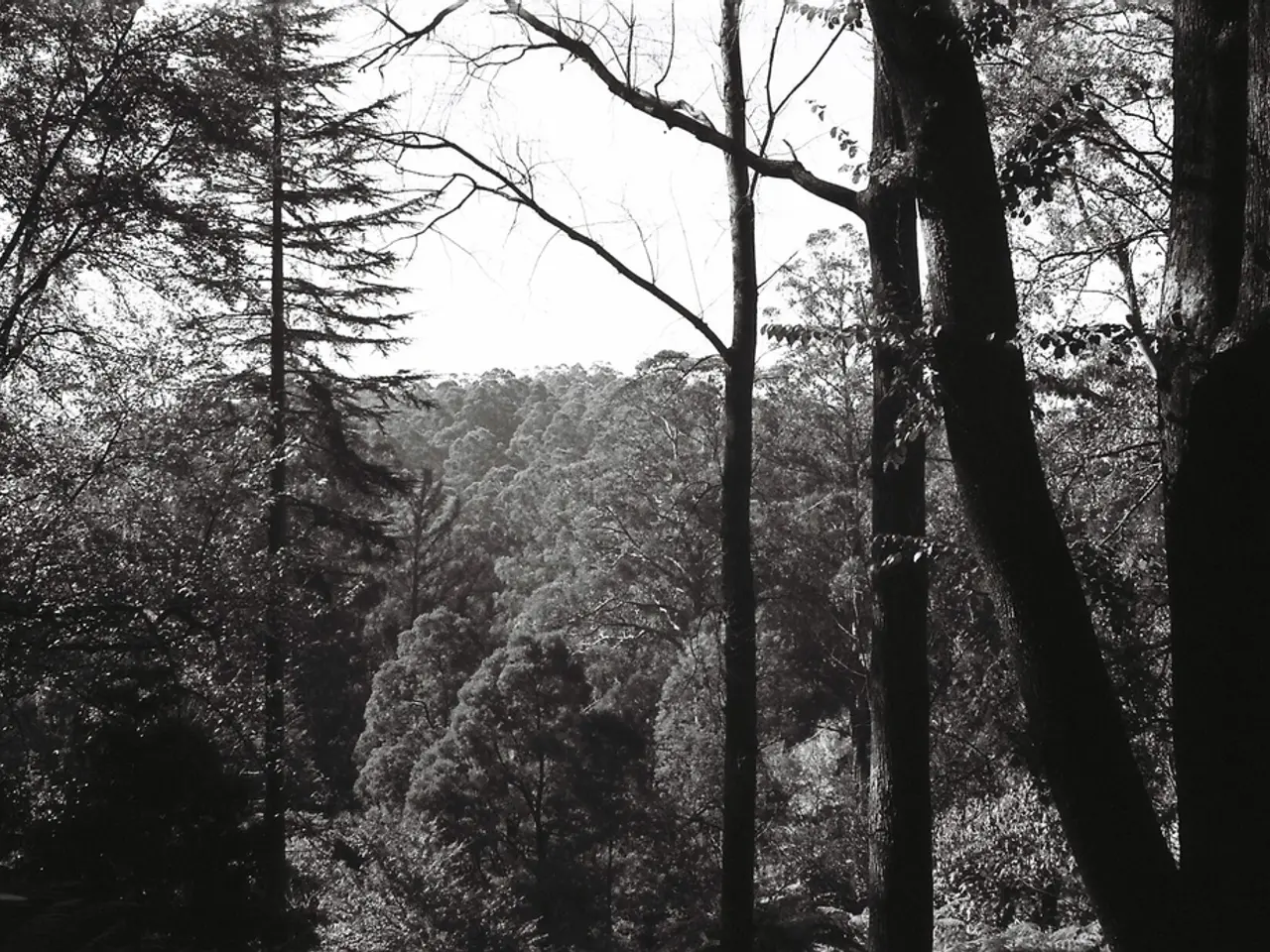Potential Arboricultural Nightmares Threatening Your Garden Landscape
Avoiding Problematic Trees for Your Backyard
When it comes to choosing trees for your backyard, some species can cause more harm than good. Here are five trees that gardening experts advise against, along with some alternatives and problematic plants to avoid.
1. Eastern White Pine (Pinus strobus)
This tall and wide tree, growing up to 80 feet, is best suited for larger spaces. Its susceptibility to blister rust and pests like pine weevils and bark beetles make it a maintenance headache. It's also highly flammable, posing a fire risk near homes.
2. Norway Spruce
With a potential height of over 80 feet and shallow roots that damage sidewalks, driveways, and foundations, the Norway Spruce is generally too large and aggressive for residential yards.
3. Eastern Cottonwood (Populus deltoides)
Cottonwoods are known for their weak wood that frequently drops sticks and limbs, making them hazardous and messy. They also produce fuzzy seed capsules that accumulate and sprout everywhere, causing cleanup issues.
4. River Birch (Betula nigra)
River birches can reach up to 70 feet tall and 40 feet wide, making them too large for most small yards. They drop sticks and catkins throughout the year, requiring constant cleanup.
5. Eastern Red Cedar (Juniperus virginiana)
Although tough and native, the Eastern Red Cedar hosts wildlife and pests that can be problematic in a backyard setting.
Some other problematic plants, though not all trees, include aggressive vines like trumpet vine and groundcovers like bishop's weed, which spread aggressively and damage structures and other plants.
Alternatives and Recommendations
Instead of the Norway Spruce, consider the Serbian Spruce, which grows more slowly and has fewer issues with root damage. For an alternative to the Eastern White Pine, the Dark American arborvitae is a less aggressive species.
Problematic Trees to Avoid
Oak trees, particularly those with invasive and strong roots, can cause significant damage to backyard spaces. The Silver Maple, Oak trees, and Southern Magnolia are known for their damaging root systems, which can clog water lines, damage sidewalks, and even invade and damage sewer lines.
Willow trees, with their aggressive root systems, can interfere with underground systems and even a home's foundation. The Bradford Pear tree is frequently discouraged due to its invasive smell and easily dispersed seedlings.
Conclusion
Choosing the right trees for your backyard is crucial to maintaining a healthy and beautiful outdoor space. By avoiding problematic trees and plants like those mentioned above, and opting for smaller, less aggressive species, you can ensure a thriving garden that brings joy and not headaches.
Decorating a home-and-garden with problematic plants may lead to numerous issues such as damaging structures or causing cleanup problems. For instance, the Eastern White Pine, with its susceptibility to pests and being highly flammable, is not suitable for smaller spaces.
Gardening involves making informed choices to create a tranquil and appealing lifestyle. Instead of the Norway Spruce, the Serbian Spruce, which is less aggressive in terms of root damage, can be a better option.
Flowers, when chosen wisely, can significantly enhance a garden's beauty. Being aware of troublesome trees and plants like oak trees, oak trees, silver maples, southern magnolias, willows, and Bradford Pear trees, can help in preventing potential damage to your garden and home.
In dedication to a low-maintenance lifestyle, opting for alternative trees, such as Dark American arborvitae instead of Eastern White Pine, can result in less headaches and more time to enjoy the garden's flowers.




